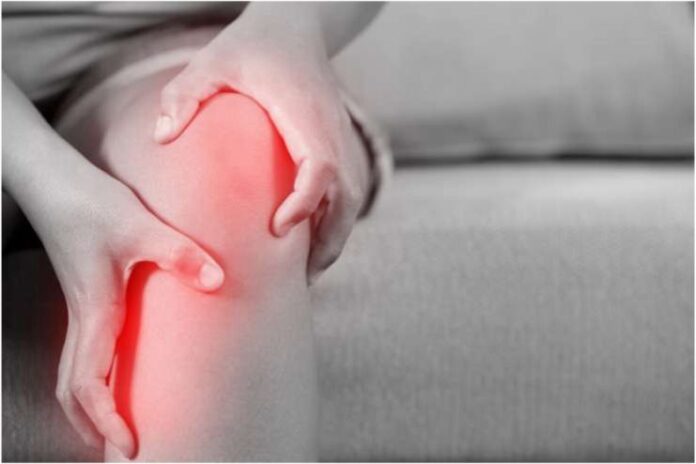Arthritis is a very common joint disease that affects more than just the body; it permeates everyday lives. Simple chores can become difficult due to arthritis’s continuous pain and stiffness, hindering normal activities. The importance of alternative pain management strategies has grown in response to the limits of traditional treatments. This piece explores the healing power of natural therapies to illuminate the path to recovery.
Through the article on holistic approaches, we hope to provide information and answers that enable people to deal with the difficulties associated with arthritis using efficient, nature-inspired pain management techniques. So come along as we explore a natural, holistic method to treating arthritis pain.
1. Exercise and Stretching
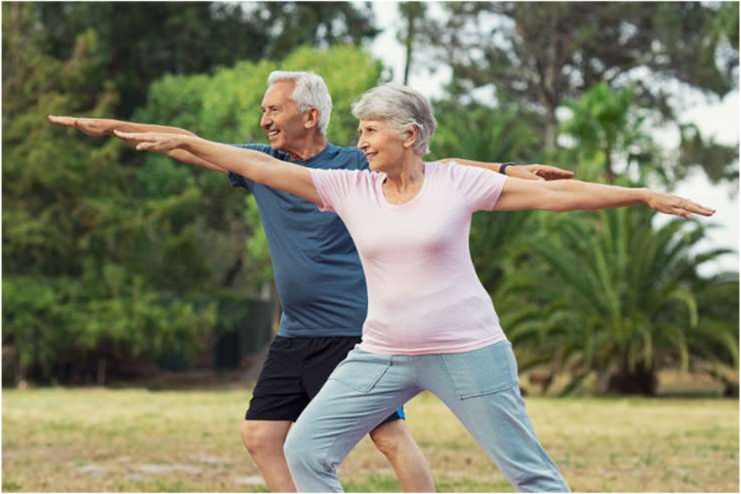
Frequent exercise provides many advantages for joint flexibility, making it a cornerstone of managing arthritis. Regular exercise improves overall mobility, eases stiffness in the joints, and lubricates them. It strengthens the surrounding muscles, giving susceptible joints more support, and encourages the creation of synovial fluid, which is essential for joint health.
A well-rounded fitness regimen for people with arthritis should incorporate low-impact exercises like swimming, cycling, or walking. These workouts improve cardiovascular health and reduce joint stress. In particular, water aerobics provides a buoyant atmosphere that reduces joint pressure. Range-of-motion exercises, such as arm circles and light leg lifts, improve joint flexibility without putting undue strain on the joints.
Stretching is similarly vital for preserving and enhancing joint mobility. Include dynamic stretches in your exercise regimen; these are slow, deliberate motions that gradually lengthen your muscles and joints. Furthermore, static stretches—which include holding a position for an extended period—help increase flexibility.
It’s critical to receive guidance on implementing stretching exercises. Increase intensity progressively after starting softly. Observe your body’s cues and refrain from exerting yourself excessively. With the help of a physical therapist, customize exercises to your requirements and capacity. People with arthritis can improve their general well-being, reduce stiffness, and promote joint health by adopting a well-rounded stretching and exercise regimen.
2. Hot and Cold Therapies
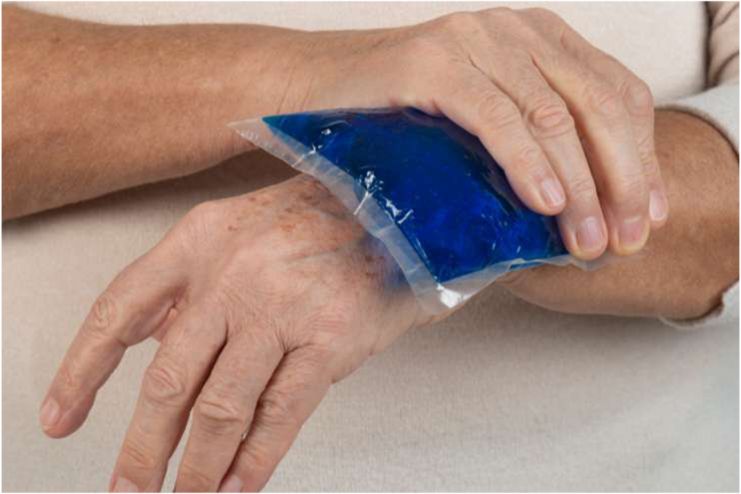
When it comes to relieving arthritis pain, hot and cold therapies are practical and affordable options that relieve pain while fostering joint health.
- Emphasize heat and cold therapy to alleviate pain: Heat therapy improves blood flow, eases muscle tension, and reduces stiffness in the afflicted areas. Soothing comfort can be obtained from heat packs, warm towels, or hot baths. On the other hand, cold therapy lessens pain perception by numbing the area and reducing inflammation. Applying ice packs or cold packs to aching joints can provide much-needed comfort.
- Techniques for efficiently using heat or cold packs: Ensure the temperature is consistently heated while utilizing heat therapy—not too hot to prevent burns. Let the heat from the heat pack seep into the tissues for 15 to 20 minutes. Use cloth-wrapped ice packs for cold treatment to avoid direct skin contact, and only apply for ten to fifteen minutes at a time. To prevent frostbite, a barrier must separate the skin from the ice pack.
- Use caution when utilizing these therapies: Although heat and cold therapies have many advantages, care must be taken. On swollen or inflammatory joints, stay away from applying heat, and don’t apply cold packs for extended periods since this might cause skin damage. Always seek medical advice, particularly if you have circulatory problems, to find the best action for your situation. People can use temperature therapy to manage their arthritis pain effectively and improve their general quality of life by sparingly learning and applying these procedures.
3. Maintaining a Healthy Weight

Being overweight has a significant effect on the health of your joints, especially if you have arthritis. Having excess weight puts strain on joints, making discomfort and inflammation worse. This extra pressure is borne mainly by the joints, particularly in weight-bearing regions like the knees and hips, which impair mobility and accelerate the development of arthritis.
Talk about how being overweight affects joint discomfort. There’s no denying the connection between being overweight and joint pain. Each extra pound puts more strain on joints, exacerbating arthritis symptoms. Losing extra weight becomes essential for reducing joint stress and promoting a more bearable and painless daily existence.
Importance of a balanced diet and healthy lifestyle: A healthy lifestyle includes a balanced diet is essential for managing weight and reducing arthritis symptoms. A balanced diet should be high in nutrients and low in inflammatory substances. Including entire grains, lean meats, fruits, and vegetables promotes weight management and general health.
When combined with consistent exercise, a healthy lifestyle improves joint function and aids in weight management, allowing those with arthritis to have more active and satisfying lives. People can make significant progress in managing the difficulties associated with arthritis and maintaining a healthy weight by embracing a healthy lifestyle and incorporating an active diet.
4. Dietary Adjustments

When managing arthritis, dietary changes can be a valuable ally. Anti-inflammatory foods alleviate joint discomfort and enhance general health when incorporated into a diet. These foods, high in omega-3 fatty acids and antioxidants, have shown promise in reducing inflammation, a significant cause of arthritic pain.
Ideas for Including Foods That Could Reduce Joint Pain:
- Fatty Fish: Include fatty fish high in omega-3s, such as sardines, mackerel, and salmon, in your diet. Packed with anti-inflammatory qualities, these fish are well-known for relieving joint discomfort. For a tasty and nutritious boost, try baked or grilled dishes.
- Brightly colored fruits and veggies: A rainbow of fruits and veggies is good because they are packed with antioxidants. Broccoli, spinach, cherries, and berries are all great options. These nutrient-dense meals support joint health and reduce inflammation.
- Legumes and whole grains: Choose legumes like the beans and the lentils and whole grains like brown rice and quinoa. Long-lasting energy is provided by these complex carbs, and their fiber content aids in weight management, which is crucial for the treatment of arthritis.
- Ginger and Turmeric: Add spices like these to your cooking repertoire. Both have antioxidant and anti-inflammatory qualities and can be savory and health-promoting additions to stews, soups, and teas.
These dietary changes can help people manage their arthritis symptoms naturally, improve joint health, and enhance their general well-being.
5. Mind-Body Techniques

When managing arthritis holistically, mind-body techniques—mindfulness, meditation, and relaxation—become vital resources. These methods emphasize the development of a strong bond between the body and the mind, recognizing the complex ways in which they interact to affect overall health.
How to Reduce Stress and Handle Pain with These Practices:
Present-moment awareness, a hallmark of mindfulness, invites people to examine their ideas and feelings without passing judgment. Various meditation techniques, such as focused breathing or guided imagery, help to develop a calm state of mind. Deep breathing exercises and other progressive muscle relaxation methods are examples of relaxation techniques that relieve body tension.
The combination of these methods offers a very comprehensive approach to the treatment of arthritis. These methods foster an environment that is favorable to pain management by lowering stress, which is recognized to be a trigger for heightened pain perception. They ease anxiety, encourage serenity, and improve the body’s capacity to tolerate pain.
Furthermore, the mind-body link has a beneficial effect on pain perception, making it easier to tolerate. People’s quality of life frequently improves as they learn to manage the mental and emotional aspects of their illness. Adopting these comprehensive mind-body approaches can foster a robust and harmonious relationship between the mind and the body, enabling the management of the physical obstacles of arthritis.
6. Acupuncture and Massage
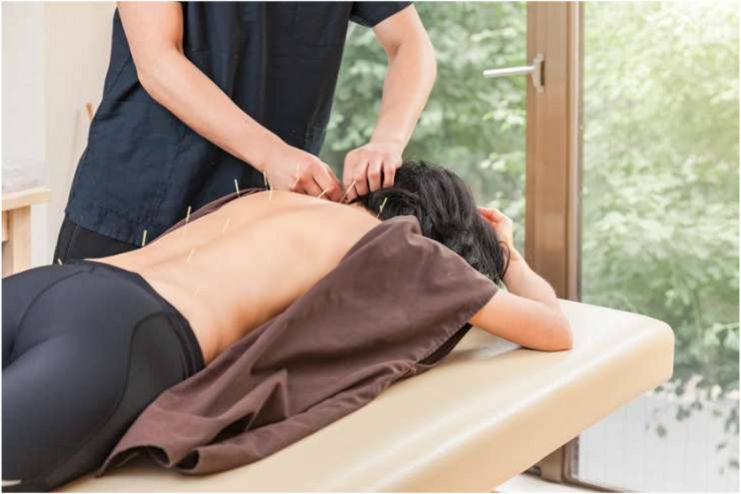
In arthritis, acupuncture and massage stand out as tried-and-true therapeutic methods with significant advantages for pain reduction.
Acupuncture: This ancient Chinese medical procedure entails the insertion of tiny needles into predetermined body locations. It is thought that acupuncture opens up energy flow and causes the body to release endogenous analgesics. Following acupuncture sessions, many people with arthritis report less pain, better joint function, and an overall improvement in well-being.
Massage: The therapeutic touch of massage therapy can increase the joint flexibility, reduce muscle tension, and improve circulation. Massage helps patients with arthritis feel better emotionally and physically by lowering stress and encouraging relaxation.
Things to Think About Before Choosing These Therapies:
Speaking with a healthcare provider before beginning acupuncture or massage is essential, especially if there are any underlying medical issues. People with arthritis should be honest with their doctors about how severe their condition is and any continuous therapies they may be receiving. To guarantee safe and efficient treatment, pick certified practitioners with expertise. While these modalities have many potential advantages, optimizing their efficacy and ensuring a satisfying, pain-relieving experience requires a customized strategy and expert advice.
7. Joint Protection Techniques
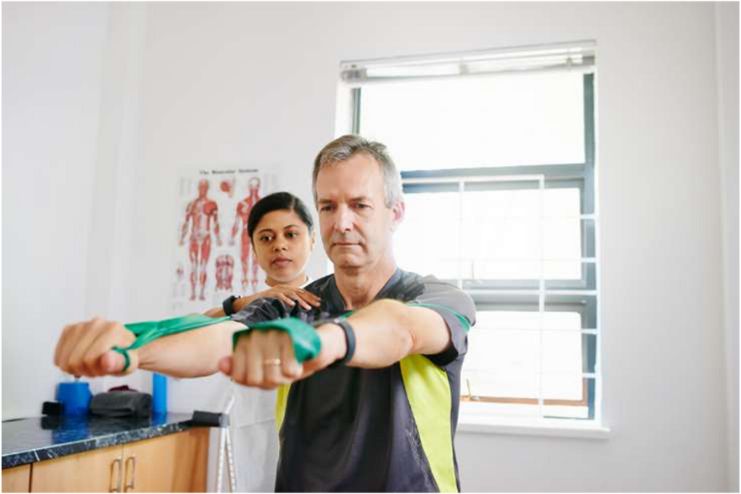
Joint protection strategies are essential for arthritis patients to maintain mobility and reduce discomfort when doing regular tasks.
Techniques to Keep Your Joints Safe During Daily Activities:
Use Assistive Devices: To lessen the strain on joints while performing jobs, use assistive devices, including braces, ergonomic tools, and jar openers.
Keep Your Posture Correct: Pay attention to how your body moves. Maintain proper posture to reduce needless joint strain, mainly when doing weight-bearing activities.
Pacing: To avoid overexertion, divide tasks into smaller, more manageable chunks and alternate periods of activity with rest.
Joint-Friendly Exercises: Take part in low-impact activities like cycling or swimming that support healthy joints. Increasing the strength of the muscles surrounding joints gives more support.
Suggestions for Changing Activities to Lessen Joint Strain:
Lift with Care: To reduce joint strain when lifting goods, keep the burden close to your body and use your larger joints, such as your knees.
Adjust Workspaces: Set up work areas to reduce bending and reaching. Keep commonly used things at the waist or eye level to lessen joint strain.
Select Joint-Friendly Tools: Select tools and cutlery with ergonomic designs to reduce joint stress and facilitate daily tasks.
Use good Body Mechanics: To ensure the effort is distributed uniformly across joints, maintain good body alignment when sitting, standing, or lifting.
8. Assistive Devices
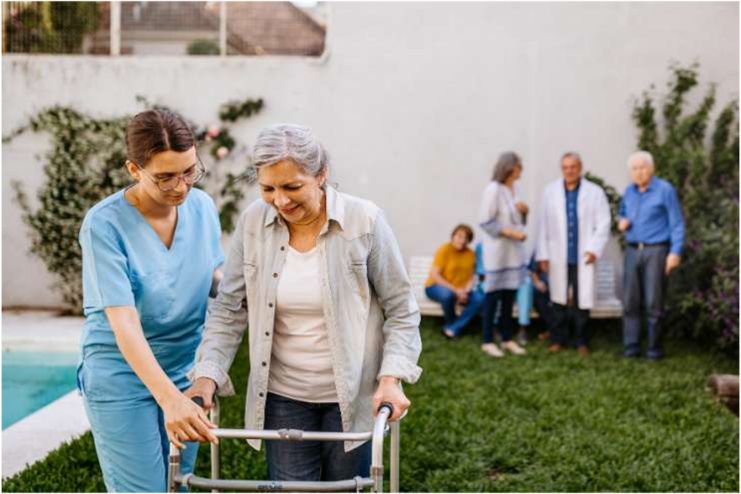
Living with chronic pain can be difficult daily, especially for those who are battling arthritis. On the other hand, the development of cutting-edge assistive technology presents a glimmer of hope by considerably boosting daily functioning and pain management. These gadgets offer individualized solutions to relieve discomfort and encourage independence, meeting various demands.
Patients with arthritis can effectively control their pain with the help of a variety of assistive gadgets. Mobility devices that provide stability and support, such as crutches, walkers, and canes, lessen joint strain while an individual moves. Ergonomic assistive tools reduce the restrictions on hand dexterity caused by arthritis. Examples of this equipment are specifically made utensils and adaptable keyboards. Additionally, electrical impulses are used in wearable devices like TENS (Transcutaneous Electrical Nerve Stimulation) machines to deliver targeted pain relief.
These technologies promote independence, which enhances the quality of life beyond only pain treatment. Patients with arthritis can improve their general quality of life by taking back control of everyday tasks, including dressing, cooking, and walking. The landscape of assistive devices is changing due to technological advancements, offering those managing arthritis complications a better future.
9. Adequate Rest and Sleep
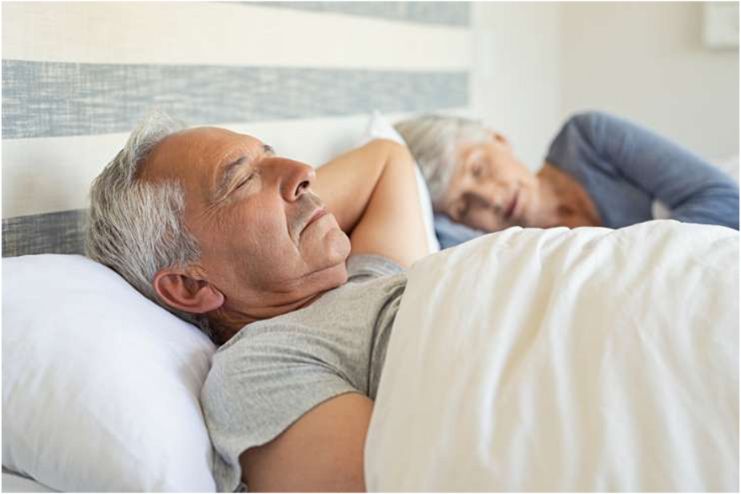
Understanding how vital rest and good sleep are for managing arthritis is crucial. Getting enough sleep is essential for both physical and chronic arthritis pain relief. It also speeds up the healing process. A healthy sleep pattern is necessary for overall well-being, and for those with arthritis, it can be a handy tool for coping with the demands of their illness.
It is impossible to exaggerate how crucial getting enough sleep is for the body’s ability to heal and rejuvenate, which reduces inflammation and helps with pain management. On the other hand, restful sleep is necessary for both physical and mental renewal. Due to the agony of joint pain, getting a very good night’s sleep can be difficult for people with arthritis.
People with arthritis can improve their sleep quality despite their discomfort by making intelligent changes like getting a supportive mattress, sticking to a regular sleep routine, and setting up a cozy sleeping space. Adding mild exercises and relaxation methods to a nightly regimen can help relieve stiff joints and encourage more restful sleep. People with arthritis can empower themselves in the continuous journey of pain management and general well-being by emphasizing enough relaxation and sleep.
10. Support Networks and Resources

It is impossible to overestimate the importance of solid support systems and trustworthy resources when managing arthritis. The emotional and practical assistance that people with arthritis receive from experts and peers can significantly impact their journey toward better health.
Support groups provide a unique forum for people with arthritis to interact with others, share coping mechanisms, and build a sense of belonging. Making connections with others who are aware of the difficulties associated with having arthritis can offer practical advice on effectively managing symptoms and emotional support. Online discussion boards, regional get-togethers, and formalized support groups for arthritis enable people to negotiate their particular experiences in a community of compassion and understanding.
Getting professional guidance is equally essential. In creating individualized regimens for managing arthritis, healthcare specialists such as rheumatologists, physical therapists, and occupational therapists are crucial. Their knowledge guarantees that people receive customized advice on drugs, workouts, and lifestyle changes to maximize their general well-being.
Reputable websites like the Arthritis Foundation (arthritis.org), the Mayo Clinic, and the (NIAMS) National Institute of Arthritis and the Musculoskeletal and Skin Diseases can be helpful centers for anyone looking for more information and resources. These platforms enable people to make knowledgeable decisions regarding their health by providing a plethora of information on types of arthritis, therapies, and lifestyle suggestions. Developing a solid support system and utilizing trustworthy resources are essential to managing arthritis and leading a more purposeful and independent life.
Conclusion
The importance of non-medication measures in the quest for arthritic pain alleviation cannot be overstated. These all-encompassing strategies significantly improve well-being and include everything from supportive networks and helpful technology to restful sleep and healthy sleep habits. People with arthritis can regain control of their lives and manage pain by adopting a multimodal strategy. There are many different ways to obtain relief; empowerment comes from figuring out a unique mix of tactics that works best for each person’s requirements and preferences.
References
- https://www.mayoclinic.org/diseases-conditions/arthritis/in-depth/arthritis/art-20047971
- https://www.cdc.gov/arthritis/basics/physical-activity/index.html
- https://www.arthritis.org/health-wellness/healthy-living/physical-activity/getting-started/8-ways-exercise-helps-joints
- https://www.webmd.com/arthritis/heat-and-cold-therapy-for-arthritis-pain
- https://www.mayoclinic.org/diseases-conditions/arthritis/in-depth/arthritis/art-20046440
- https://www.arthritis-health.com/treatment/alternative-treatments/applying-heat-vs-cold-arthritic-joint
- https://www.betterhealth.vic.gov.au/health/conditionsandtreatments/arthritis-and-diet
- https://www.webmd.com/arthritis/features/weight-joint-pain
- https://www.arthritis.org/health-wellness/healthy-living/nutrition/anti-inflammatory/the-ultimate-arthritis-diet
- https://www.arthritis.org/health-wellness/healthy-living/nutrition/healthy-eating/eat-right-for-your-type-of-arthritis
- https://www.medicalnewstoday.com/articles/320233#foods-to-eat
- https://www.arthritis.org/health-wellness/treatment/complementary-therapies/natural-therapies/meditation-benefits-for-people-with-arthritis
- https://www.arthritis.org/health-wellness/treatment/complementary-therapies/natural-therapies/acupuncture-for-arthritis
- https://www.verywellhealth.com/can-acupuncture-help-arthritis-pain-5105273
- https://www.uhhospitals.org/services/rehabilitation-services/patient-resources/joint-protection-for-arthritis
- https://versusarthritis.org/about-arthritis/managing-symptoms/joint-care
- https://www.webmd.com/arthritis/features/living-easier-arthritis-devices
- https://www.arthritis.org/health-wellness/treatment/complementary-therapies/physical-therapies/physical-therapies-and-devices
- https://versusarthritis.org/about-arthritis/managing-symptoms/sleep
- https://www.arthritis.org/health-wellness/healthy-living/managing-pain/fatigue-sleep/sleep-and-pain
- https://creakyjoints.org/about-arthritis/rheumatoid-arthritis/ra-patient-perspectives/impact-support-groups
- https://www.arthritis.org/health-wellness/healthy-living/emotional-well-being/emotional-self-care/build-a-support-system-to-fight-arthritis
In this Article














